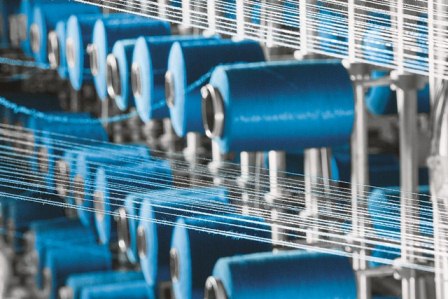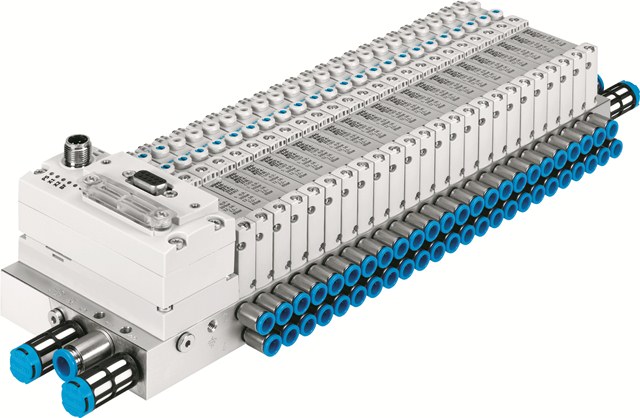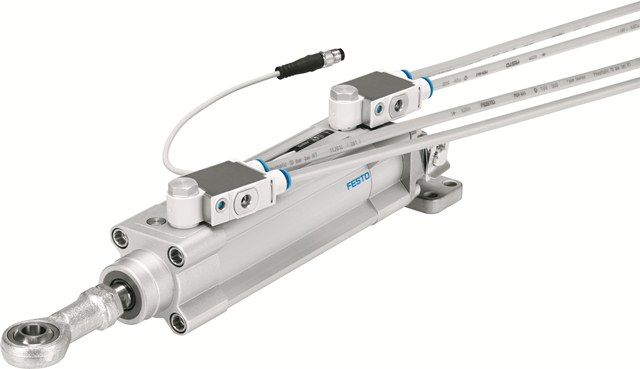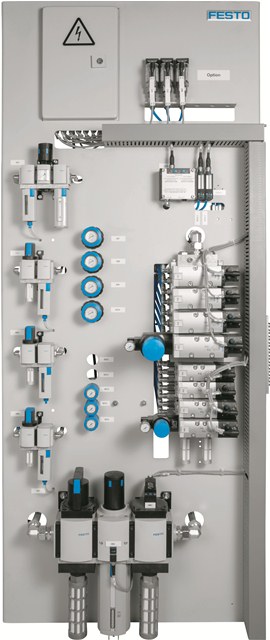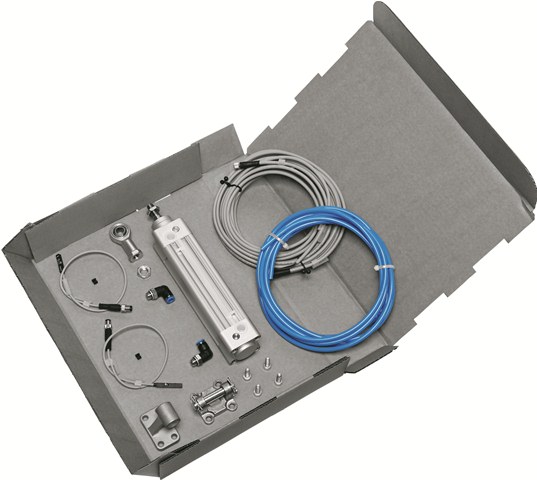The pronounced growth in world population is also driving the demand for textiles. However, despite rising sales, the trend is towards ever-lower textile prices. This means that the textile industry is forced to produce at lower cost, and OEMs are being asked to develop ever-faster and ever-more-productive machines and plant. Thanks to Festo’s robust pneumatic automation technology, textile machine builders have a supplier they can rely on, with products available world-wide and dependable service.
Only by achieving an optimum match of machines from fibre preparation and spinning preparation through to the final spinning process is it possible to achieve the desired yarn quality with maximum flexibility, productively and economically, no matter whether the machines concerned are for ring, compact, rotor or air spinning.
One very important factor for machine builders is that suppliers of automation technologies such as Festo should be close at hand all over the world, with products, spare parts, advice and services, and also with individual customised product solutions. “Many textile machine builders have their development centres for pre-production machines in Europe. Their textile machines are, however, assembled in production countries such as China or India. In these cases, closeness to customers’ needs to be more than just an empty promise,” explains Mr. Andreas Hiller, Key Account Manager for the textile industry at Festo. For this reason, Festo’s product and service specialists with their wealth of industry know-how are on the road not only in Europe but also in Asian countries with their vast stocks of textile machines.
Ring spinning and compact spinning machines
With ring spinning, long machines help reduce energy consumption and production costs. Modular machine concepts increase flexibility with regard to yarn fineness. The efficient ring spinning machines produced by the world market leaders can process both coarse and fine yarns and also special yarns. Cost-efficient solutions reduce the necessary investment costs per kilogram of yarn and thus increase the cost-effectiveness of ring spinning.
Compact spinning machines bind the edge fibres of a yarn completely into the yarn structure. Compact spinning machines with cutting-edge technology require only around 25% of the compacting energy of other comparable solutions. They eliminate the costs and effort required to replace worn compacting belts. Yarn produced on these machines has very little hairiness.
Robust automation technology
These standard machines typically feature many robust standard automation components and provide reliable operation in the dusty environments caused by fibrous basic textile materials and also in the hot and humid tropical climate of the production countries of south-east Asia. Festo pneumatic cylinders such as the DSNU (round cylinders), DSBC (ISO cylinders) and ADN (compact cylinders) equipped with the self-adjusting cushioning system PPS have demonstrated their proverbial durability millions of times over, both in the laboratory and in practical operation.
The same applies to the Festo valves and valve terminals VUVS and VTUG. To provide complete closed-loop pneumatic control, Festo also supplies the flexible and modular service units of its MS series and suitable tubing and fittings. If a precise approach to positions is required, the solution of choice is the electric cylinder EPCO, since, as part of Festo’s Optimised Motion Series, it is just as easy to commission as pneumatic cylinders.
More delivery service
In the case of high-performance machines such as rotor and air spinning machines, OEMs not only expect to be supplied with reliable standard components but also expect their automation suppliers to offer an expanded range of services which will allow them to concentrate on their core competencies and develop their machine technology further.
“They expect us to supply complete units such as mounting plates already fitted with valve terminals, service units and tubing,” reports industry expert Mr. Hiller of Festo. Complete units such as a fully assembled DSBC cylinder with sensors, fittings and attachments can be compiled online with the aid of the Festo Design Tool3D and ordered as a single unit. The Festo 3D Design Tool is a 3D product configurator for generating Festo-specific CAD product combinations. This allows machine designers to generate and order product modules quickly, error-free and automatically in a CAD format. OEMs also attach importance to customer-specific tubing with special labelling and the specific flow control valve.
Pre-packs simplify the assembly process
A further way of making the life of machine builders easier is for them to use so-called pre-packs. These are packaging units compiled in accordance with customers specifications. They can be ordered using just one part number and are then delivered directly to the machine in one package. This saves process complexity, time and money. It also increases the security of assembly operations, since all the necessary components are available complete and at the same time.
Rotor spinning machines
The rotor spinning method is used above all for shorter fibres such as short-stack cotton and combings, medium-stack cotton and chemical fibres. Compared with ring spinning, the rotor spinning process is considerably faster and thus less expensive. In its main application, the resulting yarns are coarser than those produced with ring spinning. The productivity of a rotor spinning machine, with outputs of up to 350 m/min., is significantly higher than that of a ring spinning machine.
The volume and hairiness of the rotor yarn can be considerably influenced by the choice of rotor and nozzle. Fully-automatic rotor spinning machines have up to 600 rotors or spinning points and are thus highly productive. Rotor spinning machines deliver consistent yarn quality, which ensures good results when the yarn is processed further. Approximately 20% of the yarns produced world-wide from stack fibres are manufactured on rotor spinning machines.
Air spinning machines setting trends
Leading models of air spinning machines have 200 spinning units and achieve an output of 450 m/min. They reduce the spinning start time by half and ensure extremely economic production. Double-sided machine designs reduce the machine footprint and also the energy consumption for air conditioning and lighting.
Independently-operating machine sides with separate-adjustable parameters and a separate sleeve feed make it possible to produce two completely different products at the same time. The applications of these machines range from combed cotton through to vicoses and microfibres and chemical-fibre mixes. A characteristic feature of these machines is the facility for rapid interchange of technological components: This ensures high flexibility and short downtimes for maintenance, component changing and optimisation of yarn quality. “With these machines, OEMs quite rightly expect fast reaction times from their automation suppliers,” explains Festo’s automation specialist Hiller.

